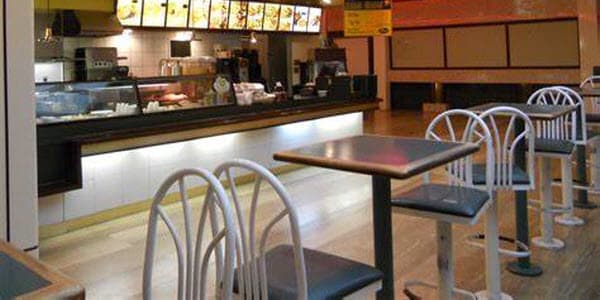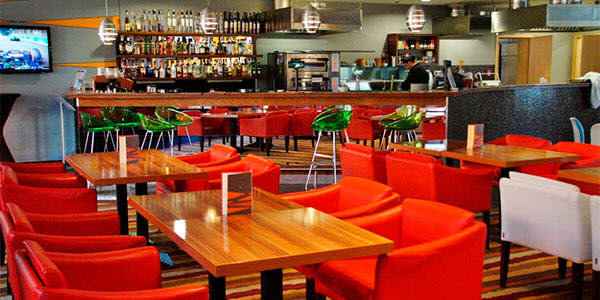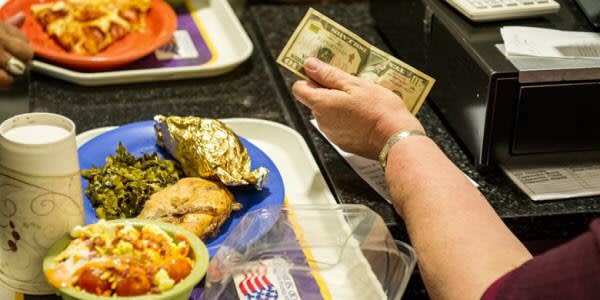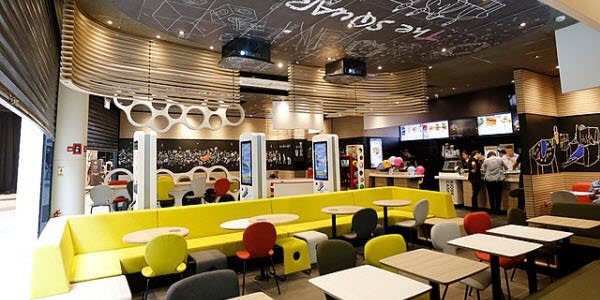While some restaurateurs and chefs stay in tune to the latest trends and concepts in the restaurant business, others create and develop them. The two stalwarts of the American food service industry were always the fast food and fine dining. But now, the rapidly growing fast casual restaurant sector has squeezed itself in. Companies, including many restaurant brands like Chipotle, Panera and Shake Shack are increasingly combining healthy ingredients with fast food services to launch this trend. Though still dwarfed by fast-food competition in sheer numbers, fast-casual chains are growing much faster.
Fast Casual Restaurant vs Quick Service Restaurant

Quick Service Restaurants

McDonalds, KFC, and Burger King come to the minds of many when they think of fast-food restaurants. A fast food restaurant, also know as a quick service restaurant, is a specific type of restaurant that serves fast food cuisine like burgers, hot dogs, pizza, salads, wings, and fries with minimal table service. Food served at these type of restaurants are offered from a limited menu, cooked in advanced, kept hot, finished and packaged to order. These chains have been feeding millions of people since the 1950s. If you manage a quick service restaurant, you’ll understand that people value dining without breaking the bank or running late to work. Fast food restaurants feed their customers on the average check size of $5.00. If managed correctly, starting and operating a fast-food restaurant opens many doors of opportunities for success. Since they have a large customer base that always want quick and cheap food, fast-food joints are far from being obsolete. Although these restaurant provide a level of service that differs from fast-casual or fine dining experience, there are a few important key factors that are crucial for maintaining your fast-food restaurant business:
- Quick service
- Clean facility
- Healthy options
- Menu variety with a small amount of specialization
Fast-Casual Restaurants

These types of restaurants offer a relaxing and friendly dining atmosphere, moderate food pricing, large alcohol menu, large portion meals, and table services. Numbers of fast-casual restaurants have exploded around the globe. According to a survey conducted by CHD Expert back in 2017, fine dining restaurants accounted for .55% in the US restaurant industry. Casual restaurants, which currently generate the most profits in the restaurant industry, appear in many forms. Casual and fast casual restaurants like Noodles & Company,Panera Bread and Shake Shack mark the American landscape. If you are a franchise owner, you need to invest in between $754,000 to $1,054.00. If you want to open an independent restaurant with a fast-casual theme, you need to start with the basics; menu, restaurant design, good location, commercial equipment, financing, and restaurant furniture. Albeit the cut-throat competition, there is still hope and a chance of success for a new restaurateur looking to open a fast-casual restaurant if these tips are followed through:
- Offer and advertise great food that is affordable and made quickly.
- Find ways to include made-to-order items on the menu. Customers are likely to pay more when customization is presented as an option.
- Ensure a high quality product by specializing in a certain food category.
- Include healthy options in your menu.
- Maintain a functional, efficient and clean facility.
Driving Force of Fast-Food and Fast-Casual Trends

Fast-food and fast-casual generally targets the business lunch crowd. The fast-casual consumer profile is married and employed between the ages of 35 and 45. Though most of them are parents, they don’t always eat out with their kids. Such consumers typically look for healthier options and a recent survey reported that 66% of them are eating more ethnic cuisines than before. Approximately 70% reported that they prefer to eat at a restaurant that serves locally sourced food. Generation Z (those born 1997 onwards) are more multicultural in their tastes of food and will search for Latin-American fusion or Asian food as easily as burgers.
Though fast-food restaurants cater to all sorts of demographics, millenials are the major spenders at fast food restaurants. 2.3% of millenials eat out regularly which estimates as roughly one trip to a restaurant every other week. As this habit continues to grow, more grocery stores are offering prepared meals or improving their existing options. More fast-food and fast-casual chains among many other types of restaurants are offering delivery and making their to-go menu options more accessible. Fast (fine) dining is a natural extension of fast casual and eating-on-the-go food choices that millenials are demanding. Additionally, technological advances like POS systems are enabling these trends to skyrocket. They are no longer just ordering breakfast, lunch or dinner. They want their meals to be an “experience” to share on social media.
Interior Restaurant Design and Layout

Although it looks simple, there is a lot of thought put into a restaurant design for a fast food restaurant. The premise is to make the surface as attractive as possible but with a few physiological elements that are also supposed to keep diners engaged and make them hungry. The first order of business in any quick service joint is maximizing space. These chains draw in a lot of foot traffic on a regular basis. That is why everything from restaurant furniture to order counter and self-help restaurant tables are designed and laid out to be very compact. Seating, whether with restaurant chairs or booths, is designed to be simultaneously interactive yet isolated. The tables used at a fast-food restaurant are usually laminated and small (seating 4 people at maximum) with larger restaurant booths to accommodate families or larger parties.
Fast-CasualThe key ingredient missing from most fast-casual eateries, especially in the restaurant design, is inspiration. However, that is changing as the industry trend to improve fast food has spawned a more upscale category. In hopes to impress customers who are willing to pay more for high quality food and efficient wait service, chains and independent businesses alike are concentrating more on restaurant interiors. Some interior design and material components have become common touch points for fast-casual restaurants nationwide. For instance, wood, brick, and marble have been widely used to communicate modernism, comfort and quality. Furniture used for fast-casual dining spots are diner booths with resin tables and wood restaurant chairs. In some places, the kitchen has an open layout where customers can see their meals being prepared.
